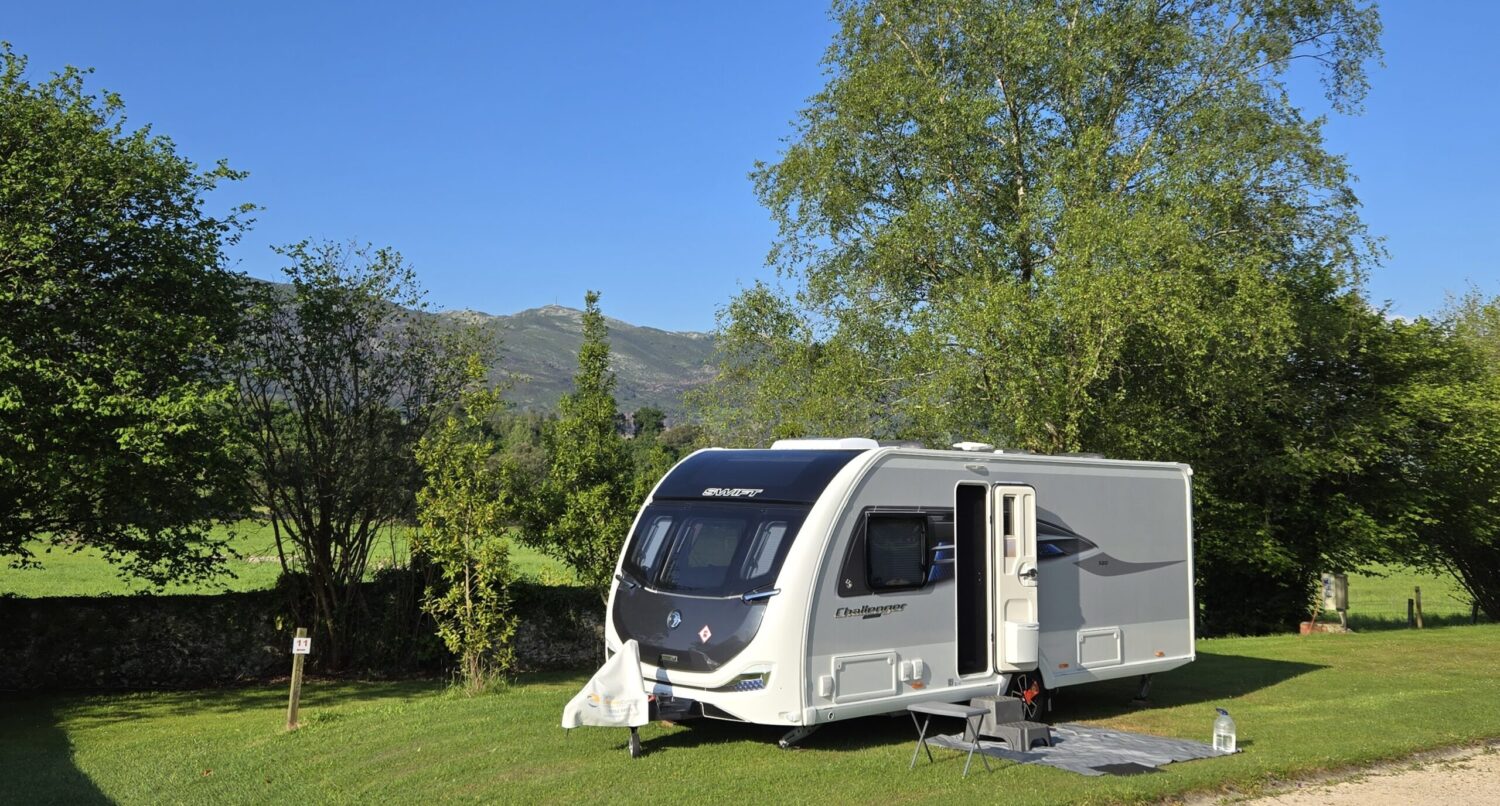8 TOLL ROADS IN INLAND PORTUGAL
Inland Portugal is certainly hilly! Mountainous even, in parts. It’s now Wednesday 13 June. We spent half of yesterday trying to work out how to use their electronic-only toll roads. And the other half using them! What a game! Why does such a small country need three different systems anyway? In fact, why do they need perishing tolls at all? I suppose, to be fair, the auto-routes are major pieces of engineering and would have cost a fair bit to build. I wonder if EU money was involved? Bet it was!
Anyway, after two hours trying to register our card by SMS as instructed (in miniscule writing on the back of the card), a very helpful lady in a pharmacy suggested I try entering the code with no spaces. Bingo! So that was how we spent yesterday morning. But I need to catch up a few days.
On Saturday (9th June) we went to Vila Viçosa to see the Palazzo Ducale – the Dukes’ Palace.
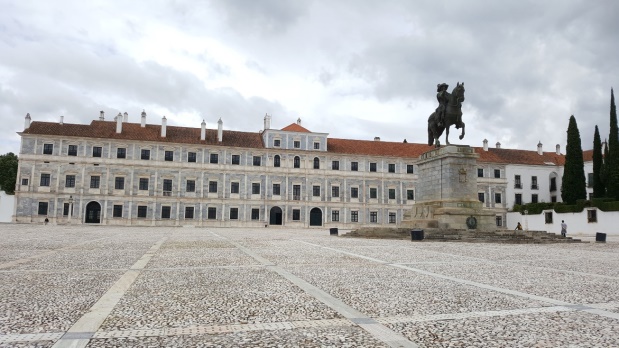
For many centuries it was the seat of the House of Braganza – one of the most important noble families of Portugal. Building was started in 1501 by Duke Jaime because he had got sick of living in his uncomfortable, hill-top castle. It has had several make-overs since, mainly in the 16th and 17th centuries, and now boasts a 110 metre long facade allegedly modelled on the royal palace in Lisbon. With lots of marble!
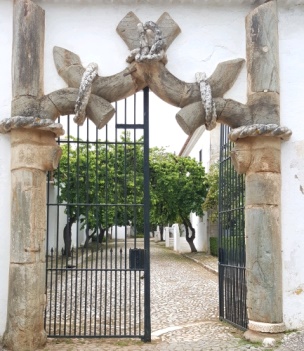
Doorway of the Knots – yes, it’s really called that!
Talking of marble, as we had driven from Borba on the N4 towards Vila Viçosa, we chanced on a couple of marble quarries. Perhaps “chanced on” isn’t the correct expression. Borba is dominated by massive piles of “nearly-marble”. You can’t really miss them. They are enormous structures built of cuboid chunks of pale coloured rock.
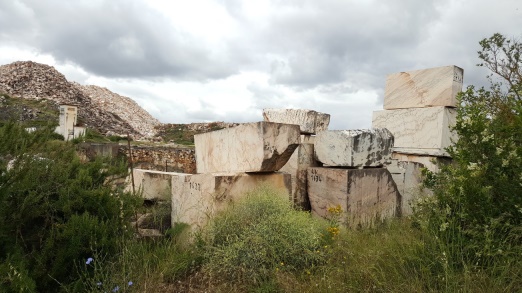
This is the waste from the quarries which are themselves huge pits with more or less vertical walls and turquoise coloured lakes in their bottoms. Clearly the pits are a lot less obvious on the sky-line than the spoil heaps! There were prominent signs everywhere which probably said something along the lines of “Welcome to our quarry. Please step right up to the vertginous edge to take your photos”! So I did as instructed! I still can’t see why they used so many skulls on the welcome signs!
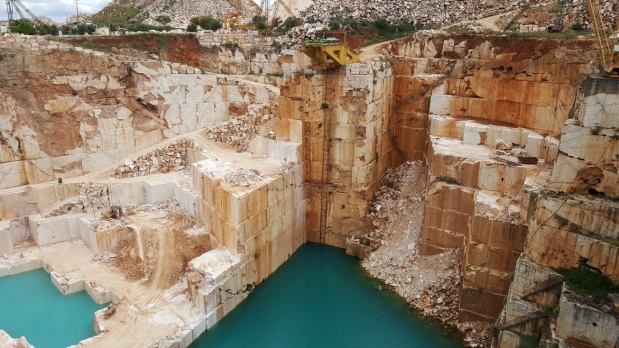
On Sunday we relocated to be near Évora. Difficult decision regarding camp-site. The choice was between a large urban site “potentially crowded and noisy” or a small rural one further out at Évoramonte with “potential for road noise”. Évoramonte won. Another village with massive hill-top fortifications.
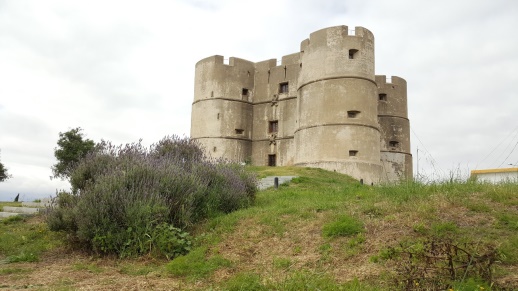
The fortified dwelling was closed but the views from the surrounding gardens were impressive. We could see clouds in every direction. 360 degrees of grey stuff. The tower appeared to be held together with rope tied with really big knots in carved stone. It transpires that these knots are symbols of the Braganza family. This explains the proliferation of things knotty in Vila Viçosa.
Significant dates in the life of the castle include: 1306 built; 1531 destruction by the Lisbon earthquake; 1834 signing of the concession of Évoramonte ending the Liberal Wars (I put that bit in for Bruce!); 1987 electricity installed. I reckon that even modern-day Portuguese electricians could get power installed in a building in less than 712 years – even if they did so with reverse polarity!
Monday wasn’t the best of days to visit Évora. On Mondays a lot of museums and interesting buildings don’t open. Still, it WAS Monday. We parked immediately outside the old city walls in the shadow of a massive aqueduct. So the Romans had been here before us! That’s the third such structure we had come across in this part of the Iberian peninsula. There were also partial remains of some sections inside the city walls. This is the Aqueduto da Água. Part of an impressively complex scheme to bring gravity-fed, drinking-quality water directly to the central square of Évora (the Praça do Giraldo). It did this via nine kms of tunnels, channels and aqueducts. Actually, it was built in the 16th century – so that probably rules out the Romans!
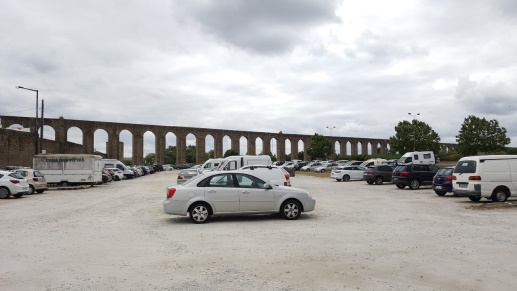
Carpark with its own aqueduct.
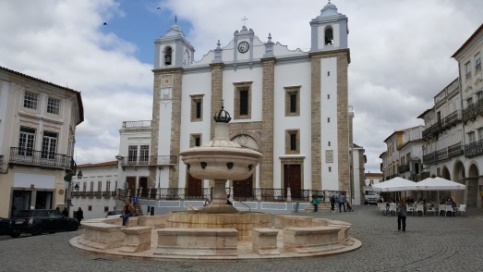
The Praca do Giraldo in Evora.
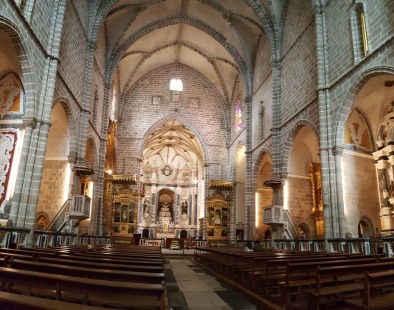
The Church of St Francis in Evora.
Another old site was the Capella dos ossos – the bone chapel. Located alongside St Francis church, it is the biggest of five such relics in the area. There is a spooky inscription at the entrance – “Nós ossos que aqui estamos pelos vossos esperamos!” “Us bones already here are awaiting yours” – or something like that! Constructed in the 15th and 16th century (A busy time around here!) by a Franciscan monk (or three) who wanted to bring home the message of human transience. And they had some spare bones from some 5000 skeletons which had been relocated from the church grounds. We had seen a smaller version in Monforte. There had also been one in Compo Maior but the story there was a bit different. Apparently, in 1732 there had been a massive gun-powder explosion and fire which destroyed two thirds of the city killing thousands. As a memorial to them their bones (skulls and femurs) have been used to line this small chapel. Rumour has it that a bolt of lightning may have ignited the massive arsenal in the fort. Luckily, the lightning strike we suffered last New Year just took out the computer, TVs and other electronic gear – but then we don’t store explosives in Galmpton!
The city is also home to real Roman remains – known (incorrectly, as it happens) as the temple to Diana. Thought to have been built in about the first century AD in what was then the central square of Évora, a city known at the time by the catchy name of “Liberalitas lulea”. (Bruce, were these the same Liberals who were at war before 1835?)
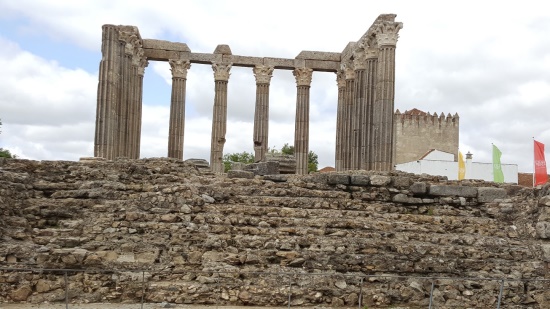
Diana Temple – (or not?)
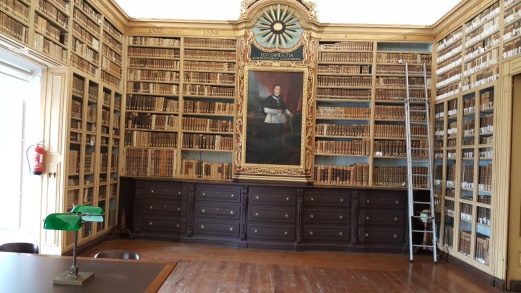
Evora’s Library
One of the gateways to the city was named Raimondo’s Gate after a famous resident of Chieveley.
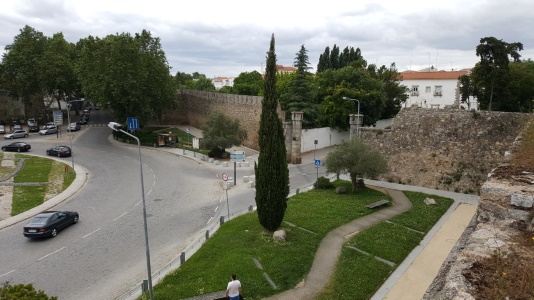
Another was dedicated to the patron saint of car hire – the Gate of Avis. Actually, that’s the Gate we used to enter and leave the city.
Yesterday you already know about – Esteramoz for a toll card at the post office; shopping, for provisions and fuel before heading into the mountains.
We’ve relocated to Chave Grande a site high in the hills above Viseu near the village of Sátão. Almost level with Porto. but that’s the next bit of the story – and tomorrow I’ll tell you how I’ve been able to catch up today!
